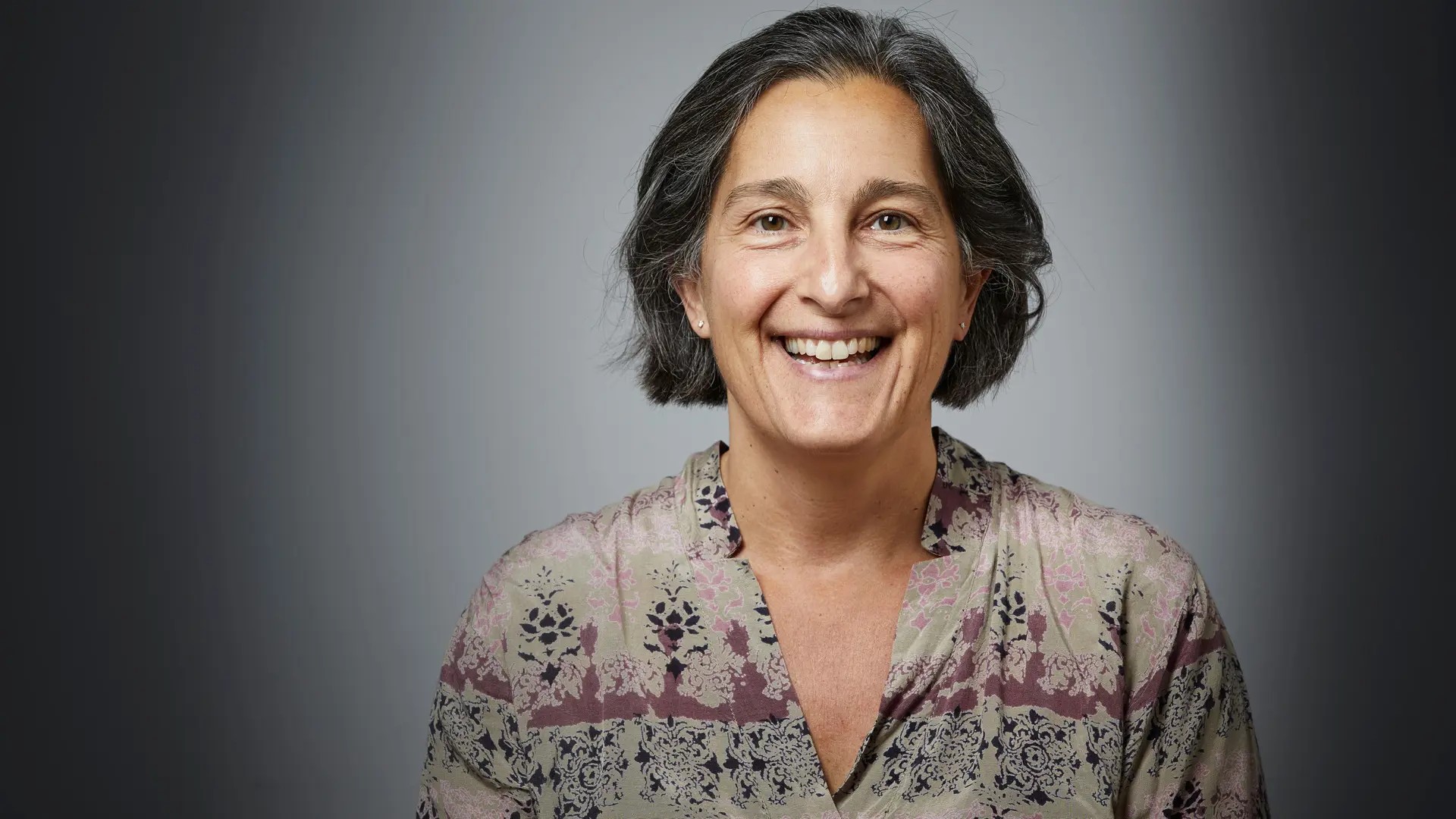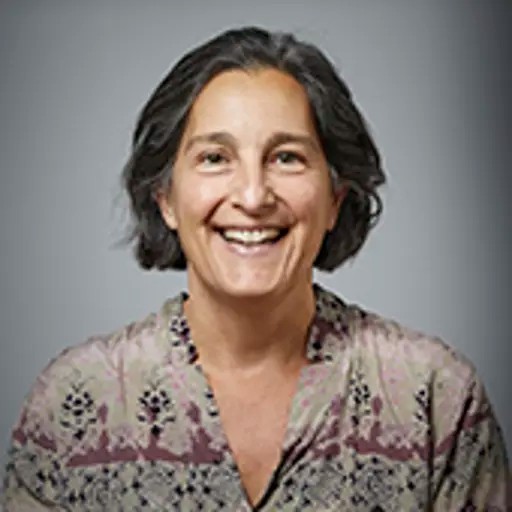
Quorn, tzay, tofu... The products meant to replace standard meat are usually vegetarian. But you can also grow meat from muscle cells. Chalmers’ professor Julie Gold’s research has made headlines far outside Sweden’s borders. But she’s got more in her cornucopia of knowledge than cultured meat.
Gold has been researching in biomaterials for many years. The goal is to be able to replace damaged body parts with implants or living tissue. Examples include developing dental implants and growing tissue for transplantation.
The idea of also growing a new type of protein-rich food source in a laboratory environment was really just a side track.
“I thought that if you can grow tissue, you should be able to grow meat,” says Julie Gold, professor in the Department of Physics at Chalmers. “It’s an interesting concept and it would also be good for the environment.”
Cultured meat a smash hit in the media
She and her colleagues have already succeeded at growing muscle cells that serve as an alternative source of protein, but that’s only one step along the way. To give the meat the right consistency, the muscle cells need to form fibres. A more refined and more large-scale product will require a significant amount of money – and it has been difficult obtaining sufficient funding for this research.
However, lab-grown meat made a big splash in the media. Gold was Chalmers’s most-quoted researcher in the media in 2010, and she has discussed the food of the future in many different contexts. In recent years, she has also noted a growing interest from food producers. There seems to be a commercial interest to invest in lab-grown meat.
“Just recently, I had an exciting meeting with a major food producer that wanted to learn more about how to produce cultured meat. We’ll see where that leads.”
A passionate and rewarded pedagogue
But for Gold, her own research is far from all-consuming. She is also passionate about education issues, teaching methods and helping others to grow. She loves teaching and guiding undergraduate and doctoral students. Over the years, she has established many new courses and a new graduate school in bioscience, and she’s headed several projects to develop postgraduate studies at Chalmers. One of her contributions is a new tool that facilitates the interaction between supervisors and their doctoral students. She has developed activities for improving supervisors’ skills, as well as courses in Generic and Transferable Skills for both personal and professional development.
A few years ago, her efforts were rewarded with Chalmers’s 2015 pedagogical award.
Developed an online course in Singapore
Recently, Gold was also one of a handful of selected Swedish scientists who were given the opportunity to share their teaching skills in other parts of the world. In autumn 2017, she worked in Singapore, developing an online course for master’s students. The result was a brand-new course in biomaterials at Nanyang Technological University.
“It was a hectic term, but an incredibly exciting project. I recorded my lectures in an advanced TV studio, with a whole team of people working with me. There were people in charge of graphics, design, content, interactivity… I was also coached by a very skilled pedagogy expert. It was incredible.”
The course was held for the first time in Spring 2018, and now Gold is going to compare the study results of the online course in Singapore with those for the same course held on-site at Chalmers.
“It will be exciting to evaluate the learning outcomes and how the students felt about the instruction, depending on whether or not the teacher was in the room.”
Challenges herself on the horseback
Her time in Singapore was also exhilarating after many years in the same workplace. Although she seems to have been very successful outwardly, over the years she has also encountered many obstacles and occasional uphill battles.
“My topic is biomaterials, not physics, and sometimes it felt as if my research and teaching fell between two departments. Because I’ve had difficulty getting funding for lab-grown meat, I’ve also felt that I was a financial burden on the department.”
When she aired these thoughts with her old manager, Bengt Kasemo, he had one concrete suggestion: “I think you should take up riding,” he said. Gold was 45 years old and had never been involved with horses before, but she accepted the challenge.
“Starting riding was the best thing I’ve ever done for my own self-confidence. I challenged myself and my fears, and today I can manage to jump fences without being nervous.”
She rides weekly at the Billdal Riding Club, and equestrian skills aren’t all that she’s learned. She’s also learned more about communication.
“Horses sense your emotional state right away, so you have to be sure of yourself. It’s a fantastic experience, feeling that you become one with the horse when you’re galloping full speed around a course. It’s all about trusting each other.”
Her experiences from the stable have also allowed her to tackle projects from a new perspective at work.
“Horses have given me greater self-esteem, and that has helped me to overcome obstacles in my professional life as well,” she says, offering a treat to one of her favourite coaches in the stable – the placid gelding Ronaldo.
More about Julie Gold
Born: 3 September 1963 in New Jersey, USA
Lives: A flat in Guldheden, Gothenburg.
Family: One child, in-laws, a sister, and close friends.
Job: Professor at the Department of Physics at Chalmers and chairperson of the Chalmers Employment Committee.
Career in brief: Began her academic career in New York, where she studied biomedical engineering at the Rensselaer Polytechnic Institute. She specialised in materials science and became increasingly interested in surface physics – particularly through her contact with Chalmers professor Bengt Kasemo. Having almost completed her doctorate in biomedical engineering, she chose to switch tracks. After a few short assignments in Switzerland and the United States, she accepted Kasemo’s invitation to continue her career at Chalmers. In 1996, she earned her doctorate in materials science. Over the years she has held several elected positions and headed a variety of projects – including the MISTRA Environmental Nanosafety research project. Gold has received Chalmers’s pedagogical award and has been one of the institution’s most quoted researchers in the media. Recently she worked in Singapore for six months, developing an online course for master’s students in biomaterials at Nanyang Technological University. Her sabbatical year was funded by the Swedish Foundation for International Cooperation in Research and Higher Education, STINT.
Leisure interests: “I ride twice a week at the Billdal Riding Club. I love riding out in the woods. I also work out at the gym and love gardening and being out in nature. When I lived in Singapore, I swam a lot, and I like swimming in the sea here at home, too.”
Favourite place for inspiration: “Being by the water or on horseback, and feeling the wind in my face is the best thing. I like places where I can swim or ride. As a little girl I wanted to be a figure skater, and I did a lot of ice skating. I think that was about freedom and the wind in my face, too. It makes me feel graceful and light.”
Most proud of: “My students and all the great relationships I have with my current and previous students. I’m so happy and proud that I can help and inspire others.”
Motivation: “Helping others and seeing students and colleagues grow. That’s more important than my own successes. I’m more interested in the people doing the research and in my professional relationships than in getting articles published in Nature. I think we scientists should work together more, compete less with each other and start seeing ourselves as colleagues rather than competitors. Broader collaborations between different groups benefit all of society.”
First memory of physics: “My father was a mathematician and he showed me how the amount of water in a glass affects the sound the glass makes when you tap on it with a spoon. We created a real musical instrument together.”
Best thing about being a scientist: “There’s a sort of freedom – being able to steer and choose your work yourself. There are so many questions that don’t have answers, and you’re trying to work out how something works. You’re treading on unfamiliar territory and you have the freedom to try different things. As a faculty member, I have so many fun assignments, particularly when it comes to teaching and all the people I meet in my job. No two days are the same.”
Challenges of the job: “There is so much that’s exciting, so it can be hard to prioritise and structure your time. It’s easy to get distracted, and there are a lot of deadlines that need to be met.”
Dream for the future: “I hope that I will always continue to seek out new challenges, but maintaining my health is the most important thing. That’s the foundation for everything. I also dream of having a little cabin overlooking farmers' fields – preferably by the sea. I want to be able to grow my own food, ride horses, listen to the wind in the trees and the silence.”
Contact
- Professor, Nano and Biophysics, Physics
